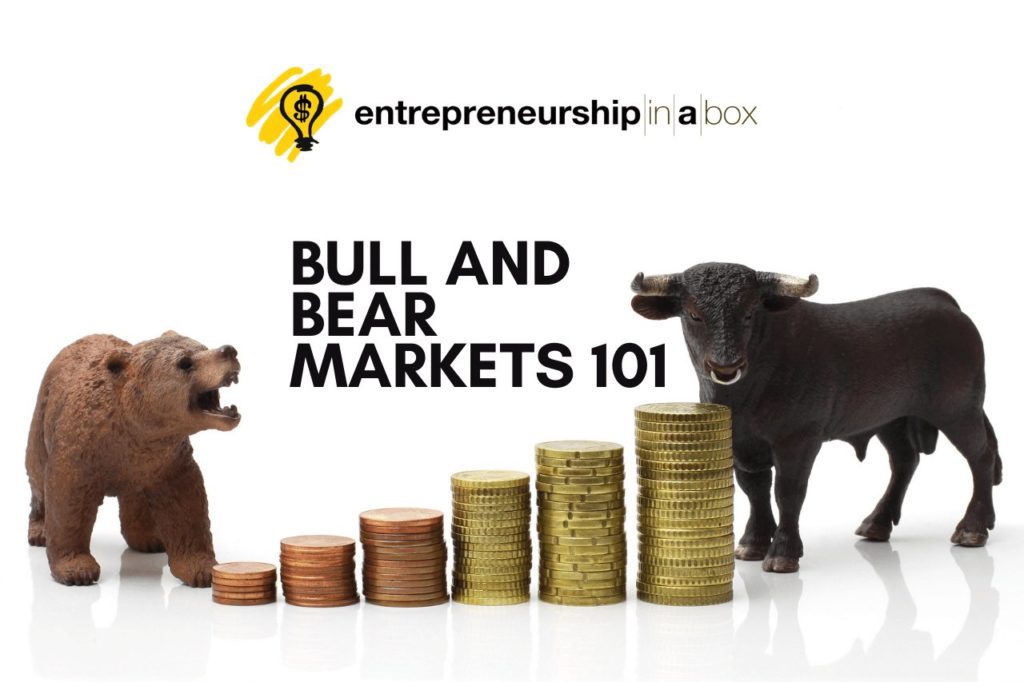In the stock targets investment sector, the terminology “bear” and “bull” are commonly used to define market conditions. These terminologies are used to define the health of the market specifically if they are depreciating or appreciating in value.
As a new investor, the direction the market is heading is a major factor that can have a significant impact on your portfolio. As such, it’s important that you understand what these terms mean and how they may affect your investments.
Bull Market
A bull market can be best defined as being a market that’s on the rise and the health of the economy is strong. A bear market occurs within an economy which is getting stronger and where stocks gradually decline in value. In a bull market, investors see a gradual increase in prices. As far as equity markets go a bull market signifies the rise in prices of the company’s shares. In a scenario like this, the country’s employment levels are high and the economy is strong. Based on the fact that bull markets are not easy to predict, investment analysts are only able to recognize it after it has occurred.
Key Things to Take Away About Bull Markets
- Happens with a strong gross domestic product or when the economy is strengthening
- A general increase in the number of IPO activity
- Investors become eager to buy securities while few will actually sell
Bear Market
Alternatively, a bear market is a market that is in decline. To be considered a true bear market, it has to experience a loss of 20 percent from a recent high. Within a bear market, companies’ share prices continuously drop. Interestingly enough, this downward trend in share prices causes investors to believe it will continue to fall which perpetuates the downward trend. Within a bear market, the country’s economy is slow and the unemployment rate rises as more and more companies lay off their workers.
Key Things to Take Away About Bear Markets
- Bear markets happen when prices in the index decline by more than 20 percent and is accompanied by declining economic prospects
- Bear markets can be long term or cyclical
- Inverse ETFs and short selling put options are two of the best ways investors can profit from a bear market as prices fall
Bull Markets Versus Bear Markets
While it may be true that bear and bull markets indicate the direction of stock prices, they each come with various characteristics you need to be aware of.
Supply and Demand
In a bull market, there is a higher demand for securities of which they experience a weak supply. This means that during this market, many people want to buy securities but few investors will be willing to sell. Due to this fact, company share prices gradually rise as investors compete to get equity.
In a bear market, the opposite occurs. Fewer people are looking to buy and more people are willing to sell. In fact, in a bear market, the demand is considerably lower than the supply. As a result of this, share prices decline.
Economic Activity
Businesses whose stocks are traded on exchanges are participants of the economy. As such, the stock market and the economy are linked. A bear market is associated with a less than stellar economy as to which companies are unable to get huge profits because consumers just aren’t spending. This has a direct impact on how the market values stocks. During a bull market, the opposite occurs. People spend more money on services and products which strengthens the economy.
Investor Psychology
The market’s behavior is determined by how investors perceive and react to it. Essentially, investor psychology is what really determines if a market will rise or fall. During a bull market, investors actively participate in the hopes of getting a profit. In a bear market, index sentiment is negative. Investors start moving their money out of equities and into securities as they wait for a more positive direction. It goes without saying that while the term bear and bull may seem simple, their underlying meaning is complicated. This is why you should consider an expert when it comes to getting started as a new investor.





